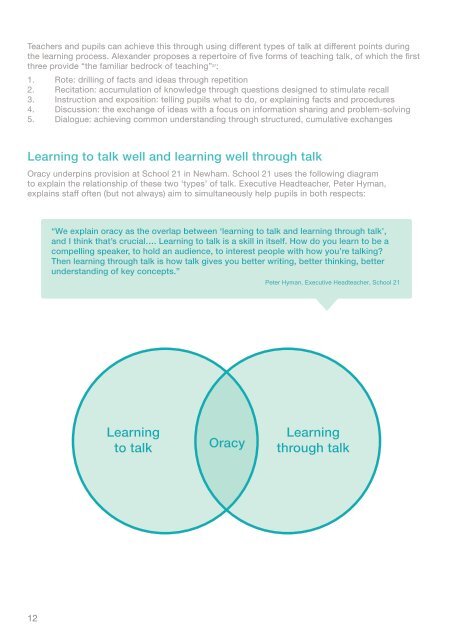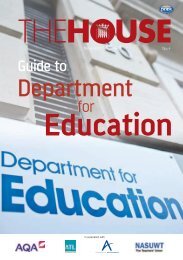Oracy
2fcBkno
2fcBkno
You also want an ePaper? Increase the reach of your titles
YUMPU automatically turns print PDFs into web optimized ePapers that Google loves.
Teachers and pupils can achieve this through using different types of talk at different points during<br />
the learning process. Alexander proposes a repertoire of five forms of teaching talk, of which the first<br />
three provide “the familiar bedrock of teaching” 27 :<br />
1. Rote: drilling of facts and ideas through repetition<br />
2. Recitation: accumulation of knowledge through questions designed to stimulate recall<br />
3. Instruction and exposition: telling pupils what to do, or explaining facts and procedures<br />
4. Discussion: the exchange of ideas with a focus on information sharing and problem-solving<br />
5. Dialogue: achieving common understanding through structured, cumulative exchanges<br />
Learning to talk well and learning well through talk<br />
<strong>Oracy</strong> underpins provision at School 21 in Newham. School 21 uses the following diagram<br />
to explain the relationship of these two ‘types’ of talk. Executive Headteacher, Peter Hyman,<br />
explains staff often (but not always) aim to simultaneously help pupils in both respects:<br />
“We explain oracy as the overlap between ‘learning to talk and learning through talk’,<br />
and I think that’s crucial…. Learning to talk is a skill in itself. How do you learn to be a<br />
compelling speaker, to hold an audience, to interest people with how you’re talking?<br />
Then learning through talk is how talk gives you better writing, better thinking, better<br />
understanding of key concepts.”<br />
Peter Hyman, Executive Headteacher, School 21<br />
Learning<br />
to talk<br />
<strong>Oracy</strong><br />
Learning<br />
through talk<br />
12




